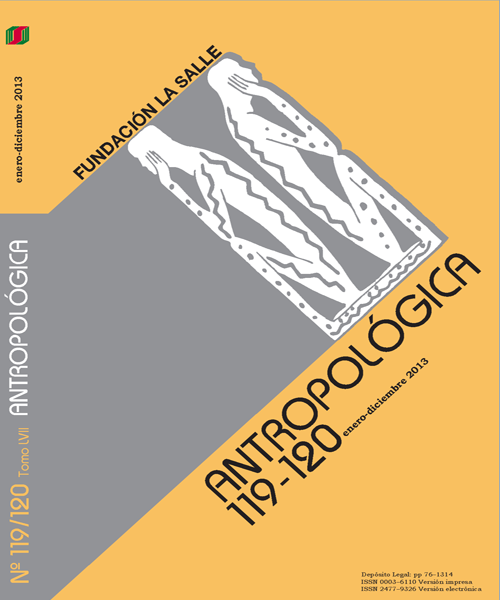Constitutive Diversity among the Waorani of Eastern Ecuador
Palabras clave:
Ethnogenesis, Waorani, Ecuador, indigenous, constitutive diversity, Etnogénesis, indígenas, diversidad constitutivaResumen
Abstract. The Waorani of eastern Ecuador were known for their isolation. A group
of only about 500 people, speaking a language unrelated to any other, they were famous
for having maintained a hostile relationship with all surrounding societies. In effect, until
the 1958 pacification of the first of their four mutually belligerent territorial groups, all
Waorani were at war with the rest of the world. Nevertheless, their culture contained
elements that they themselves identified as having come from other peoples. Some of
these elements were remnants of previous inhabitants of their territory between the Napo
and Curaray rivers: Unable to make stone axes themselves, they made gardens with ax
heads they found in the forest. Some were asserted to be transfers that came with captive
girls abducted from nearby lowland Quichua settlements. One informant suggested that
manioc mashers were introduced to the Waorani by this route. Others were adopted from
surreptitious observations of neighboring non-Waorani. After contact, Dayuma,
American missionary Rachel Saint's protégé, encouraged intermarriage with lowland
Quichua among her converts, a practice still somewhat contested by those who want to
maintain ethnic and political boundaries. Such incorporation of practices and peoples by
the Waorani continues today as they redefine what being Waorani means in a globalized
world.
Diversidad constitutiva entre los Waorani del Oriente Ecuatoriano
Resumen. Los Waorani del oriente ecuatoriano fueron reconocidos por su
aislamiento. Un grupo de solo 500 personas, que hablaban idiomas diferentes. Era
famoso por mantener relaciones hostiles con las sociedades circundantes. En efecto, en
1958 se produjo la pacificación del primero de los cuatro grupos territoriales,
mutuamente beligerantes. Todos los Waorani estaban en guerra con el resto del mundo.
A pesar de lo anterior, su cultura contiene elementos que ellos mismos identifican como
provenientes de otros pueblos. Algunos de estos elementos son remanentes de los
pobladores que les precedieron en el territorio entre los ríos Napo y Curaray. Incapaces
de fabricar hachas de piedra por sí mismos, pero sí preparaban sus tierras de cultivo con
las cabezas de hachas que encontraban en la selva. Algunos aseguraban que eran
transferencias logradas a través de niñas cautivas secuestradas en las inmediaciones de
las tierras bajas de los asentamientos quichua. Un informante sugirió que los pilones
para machacar la yuca fueron introducidos a los Waorani por esta vía y que algunos se
adoptaron a partir de observaciones subrepticias de vecinos no Waorani. Después del
contacto, Dayuma, protegido de la misionera estadounidense Raquel Saint, alentó los
matrimonios mixtos entre sus conversos de las tierras bajas quichua; práctica todavía
criticada por aquellos que quieren mantener los límites étnicos y políticos en el grupo.
Tal incorporación de prácticas y pueblos por los Waorani continúa hoy en día, ya que
ello redefine lo que significa ser Waorani en un mundo globalizado.

